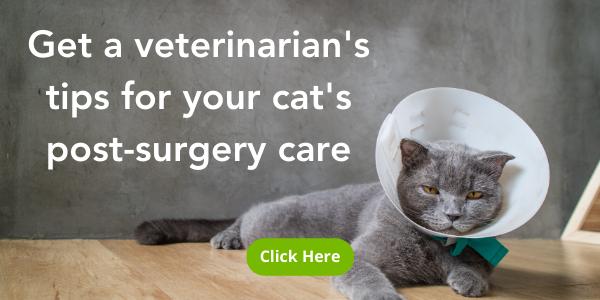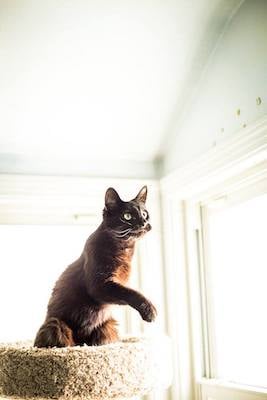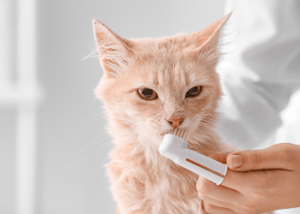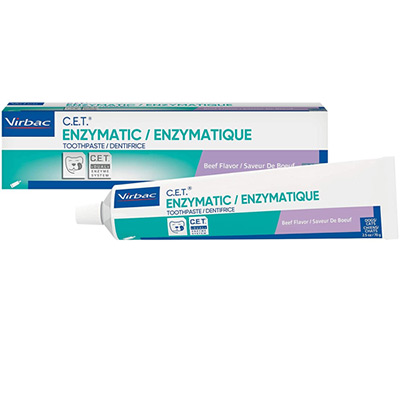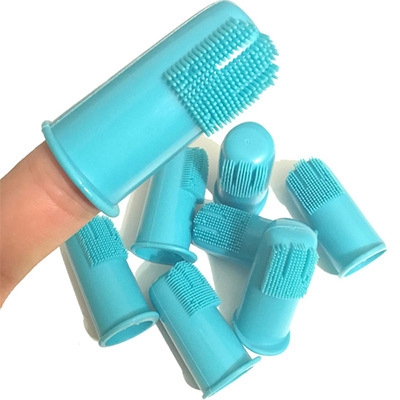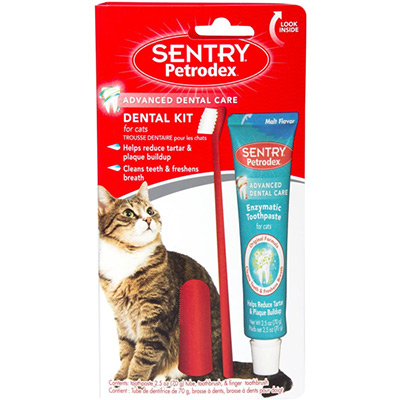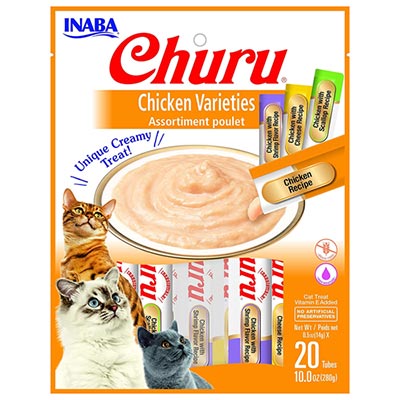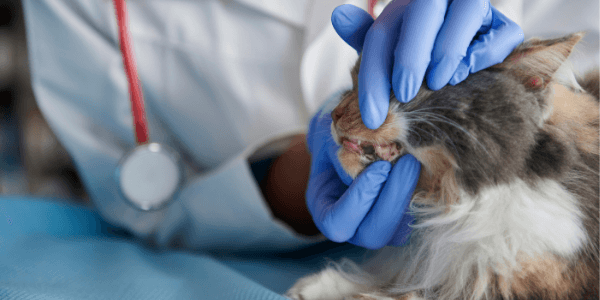 Unfortunately, diseases of the teeth and gums are common in cats.
Unfortunately, diseases of the teeth and gums are common in cats.
It is thought that as many as 85 percent of cats aged three years and older have some degree of dental disease.
Dental disease in cats can cause severe pain and discomfort, and if left untreated, it can lead to bone infection, tooth loss, and oral bacteria entering the bloodstream through diseased oral tissues, affecting other organs as well.
What Is Tooth Resorption?
Tooth resorption, formally known as FORL's (Feline Oral Resorptive Lesions) is the most common dental problem in cats, especially those aged four and older, with studies worldwide showing that up to 75% of cats with dental disease also suffer from tooth resorption.
Tooth resorption is a process by which the dentin (a hard tissue that lies beneath the enamel of the tooth) in a tooth (or teeth) erodes and eventually becomes irreversibly destroyed. Over time, all areas of an affected tooth may become involved and tooth resorption is very painful for your cat.
Tooth resorption in cats, unfortunately, often goes undiagnosed. They start as small erosions in the dental enamel and progress both in size and depth. Eventually, the erosions are deep enough to expose nerves, making the lesions extremely painful.
They often go undiagnosed for various reasons, including that cats are masters at hiding pain, and often the lesion is hidden below the gum line, so you can't see it.
Often, the problem is not noticed until the cat is showing severe symptoms, meaning your cat may have been suffering for a while, and often will be more costly to treat.
This is why regular exams and dental cleanings are so important, as your veterinarian can identify and treat the issue sooner. There does not need to be significant plaque or tartar buildup for these painful lesions to be present.
Signs Your Cat Has Mouth Pain
One of the most common symptoms in cats with tooth resorption is pain. Pain can be difficult to notice in your cat, and many cats will still appear to eat “normally” with a painful mouth, which is one of the many reasons annual veterinary visits are recommended to have your cat's mouth examined.
Pain can manifest in a variety of ways. In some cases, a cat suffering with this condition may be in too much pain to open their mouth to eat. In other cases, due to the chronic pain, the cat may exhibit behavioral changes, such as being withdrawn or irritable.
Some cats may stop eating their dry food due to it being too painful to chew, and only eat canned food. This can often result in the cat being described as a picky eater when, in fact, they have mouth pain.
You may notice your cat begins to tilt their head when eating as if they are trying to chew on one side of their mouth, or they may appear as messier eaters (food falls outside of bowl, mouth). There may be "red spots" noticeable on your cat's teeth as well.
Other Symptoms of Feline Mouth Pain Can Include:
- Drooling
- Teeth chattering
- Vocalizing while eating
- Bad breath
- Weight loss
- Pawing at face or mouth
- Decreased appetite
- Unkept coat due to grooming being too painful
- Red and inflamed gums
- Pain when their faces are touched
- Lethargy due to pain
Learn more about symptoms to watch for in How Can I Tell If My Cat Is in Pain?
How to Diagnose and Treat Tooth Resorption in Cats
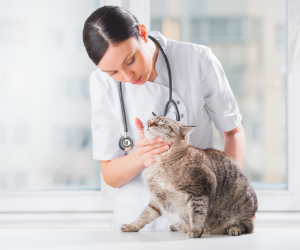
If your cat is exhibiting any of the above symptoms, schedule an exam with your veterinarian. Your veterinarian will begin with an exam of your cat, as well as obtain information about how your cat is doing at home.
On exam, tooth resorption and lesions may be noticed visually in the later stages. It will appear as a small amount of gum tissue that has grown out from the tooth as it became inflamed and attempted to fill in the hole.
The cat's jaw may tremble or chatter due to pain in the mouth on exam. Examining the mouth of a cat with oral pain can be difficult because the cat is reluctant to open their mouth due to pain.
Your veterinarian may recommend pain medications and/or sedation be given prior to the exam to facilitate a more complete and comfortable examination.
Don't give your cat human pain medication — these medications are toxic to cats. Only give your cat pain medication prescribed by your veterinarian.
Regular dental care and medical management are typically the first line of treatment. A routine dental cleaning and dental radiographs (X-rays) should be performed under anesthesia to address any inflammatory dental disease, remove plaque and tartar, assess the mouth with dental tools, and clean the tissues beneath the gum line.
To accurately diagnose tooth resorption, full mouth veterinary dental X-rays are needed for both diagnosis and to provide treatment. X-rays are needed because they allow the veterinarian to see what's going on underneath the gum line, which is needed to both diagnose and treat the tooth resorption. Treatment of tooth resorption in most cases is extraction of the affected teeth along with a routine dental cleaning.
My Cat's Experience with Tooth Resorption
My cat Jellybean (seen in the inset photo) was recently diagnosed and treated for tooth resorption. In her case, I noticed that suddenly she was irritable around the other cats in my house and was not spending as much time downstairs, where I usually am, which were new behaviors for her. This got me concerned. In many cases, cats exhibit behavioral changes when in pain prior to showing symptoms like not eating or becoming a picky eater.
As a veterinary technician cat mom, I gave her a brief exam and noticed when examining her mouth that her jaw was very painful with minimal touch, and her gums were red and inflamed. I scheduled an exam with her veterinarian immediately, and she was diagnosed by the vet. I scheduled a dental cleaning, and she was prescribed pain medications to help manage her pain prior to the dental cleaning.
At her dental appointment, her teeth were x-rayed, examined, and cleaned. Dental x-rays are an essential part of dental cleanings and are necessary for giving your pet the highest standard of care. Two-thirds of a cat's teeth are under the gingiva (gums), and not visible with the naked eye.
Dental radiographs allow your vet to properly diagnose and treat your cat's teeth. This is where tooth resorption and the cause of Jellybean's discomfort were noted. In her case, the tooth in question was extracted. She was feeling so much better and, within days, was loving her feline friends again!
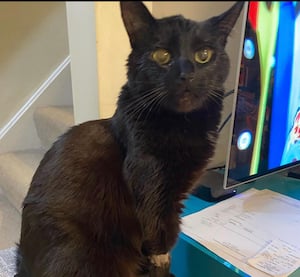
Here's Jelly Bean, a few minutes after coming home post-surgery.
How to Prevent Tooth Resorption
Unfortunately, the causes of tooth resorption in cats are not yet completely understood, and due to this, you cannot prevent tooth resorptive lesions from forming. There are times, especially if your cat has had teeth extracted before due to resorptive lesions, that it will have to be done again in the future.
Also, unfortunately, there are some cats that end up having all of their teeth extracted. But don't worry if this becomes the case – these cats actually do great because their mouth are no longer painful!
What you can do is brush your cat’s teeth to help prevent dental disease! Periodontal disease results from the accumulation of plaque (bacteria) on and around the teeth, which causes inflammation involving the gums and tooth support structures, which may be a contributing factor.
You should also take your cat to the veterinarian annually or every six months for senior cats. Your veterinarian will examine your cat for early lesions and treat them sooner.
How to Get Your Cat Comfortable with Teeth Brushing
It’s important to introduce the concept of brushing to cats slowly and always to use toothbrushes and toothpastes specifically designed for them. Cat toothpastes, for example, have been formulated to be tastier to them. They don’t foam, don’t need to be rinsed away, and don’t contain fluoride, which is toxic to cats.
Get your cat familiar with a toothbrush and toothpaste
Find a flavor of cat toothpaste your cat enjoys. Leave both the toothpaste and toothbrush out on the counter and place treats around them to help the cats create a positive association with them. You should also have them lick the toothpaste off your finger or leave a dab on the counter near the toothbrush.
Get your cat familiar with you touching their mouth
Choose a delicious lickable treat your cat likes (like tuna), then begin to place a small amount of the lickable treat on one of your cat's canines to start, and reward with a treat immediately after.
Continue to the next step of lifting his or her lips, and slowly and gently rub your cat’s teeth and gums with your finger and reward with a treat immediately after. You can then gradually switch to toothpaste and reward after.
Get your cat comfortable with the toothbrush
Put some toothpaste onto the brush and have the cat lick it off, reward with a treat. When your cat is comfortable with you touching his or her mouth and is familiar with the toothbrush and toothpaste, gradually switch to putting the toothpaste on your finger, and then to putting the toothpaste on the toothbrush. Let your cat lick the paste off the brush at first to get used to having the brush in his or her mouth.
Brushing your cat's teeth
Now that your cat is comfortable with the toothbrush, toothpaste, and you touching their mouth, we can start to work on brushing their teeth. When brushing your cat’s teeth, you only need to brush the outside of their teeth. Gently brush your cat's teeth along the gum line for 15 to 30 seconds for each side. Give a treat after.
Click here for more tips and a video on how to brush your cat's teeth!
Remember to go at a pace your cat is comfortable with, be patient, and keep it positive!
